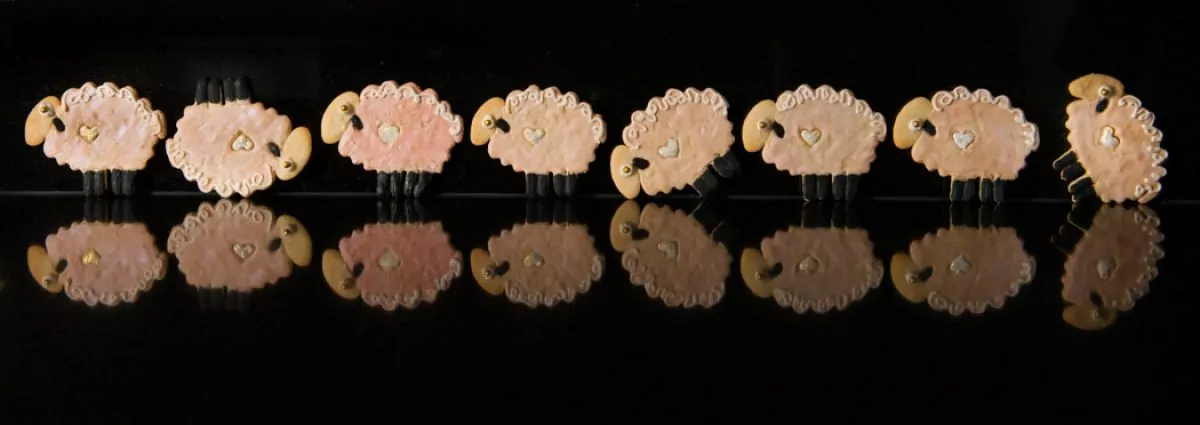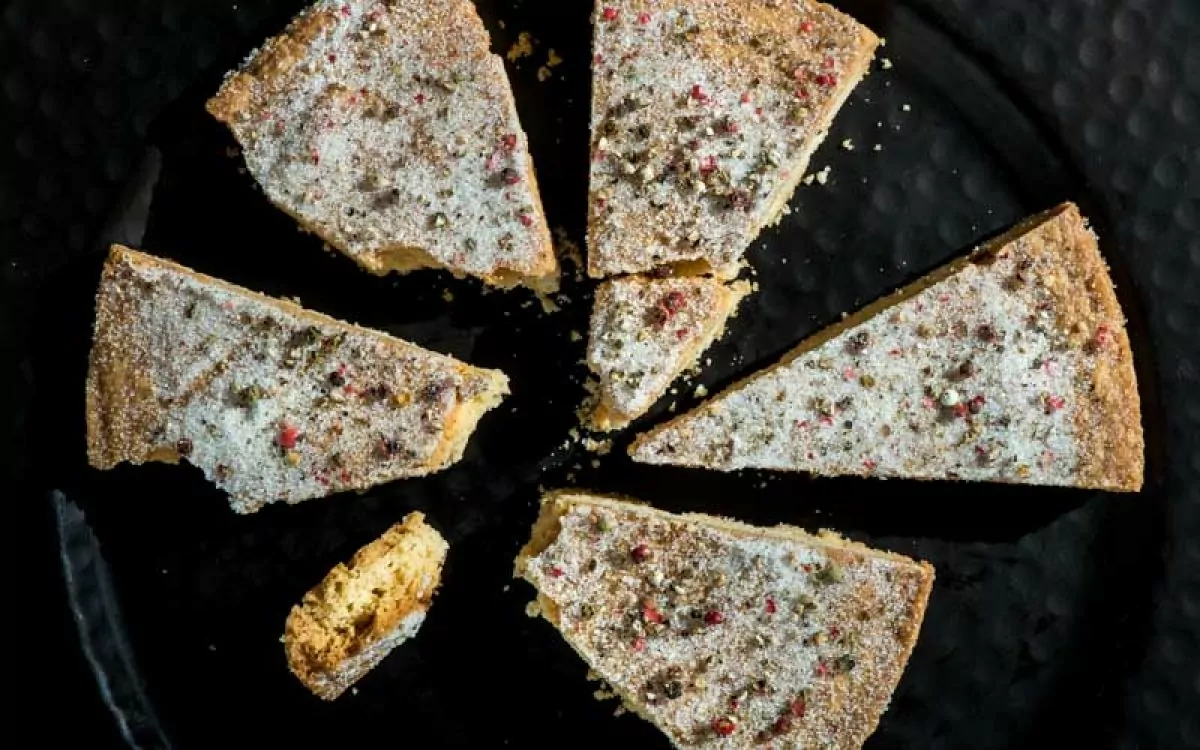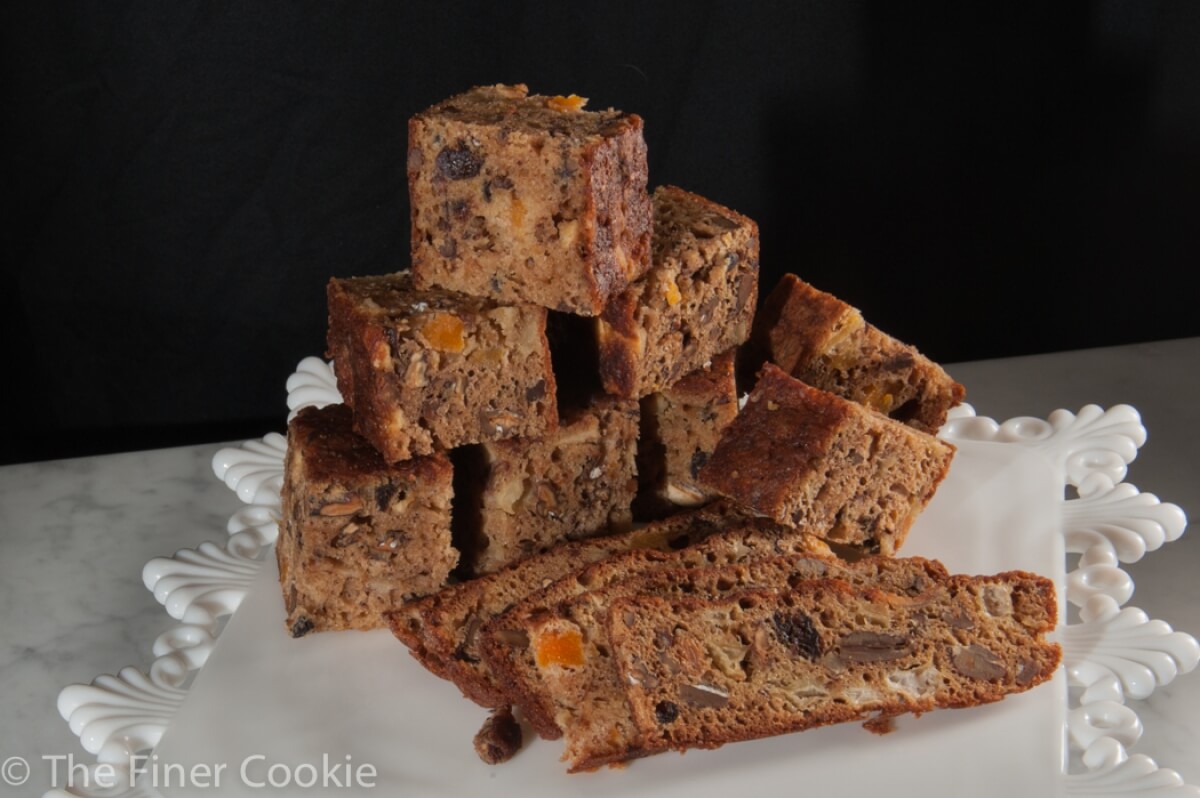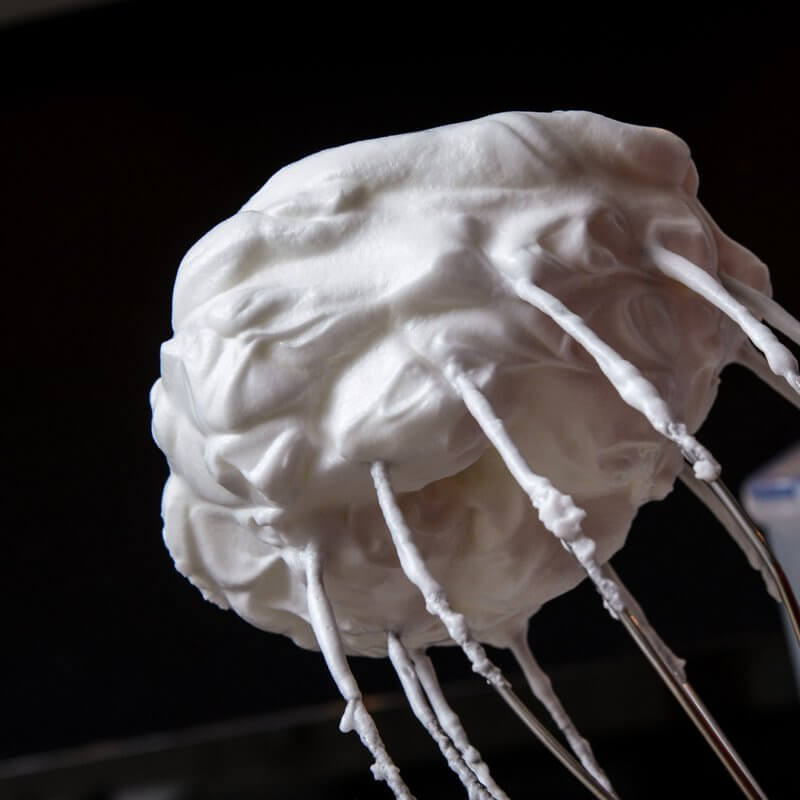
How to Meringue
May 6, 2016
Ingredients

Instructions
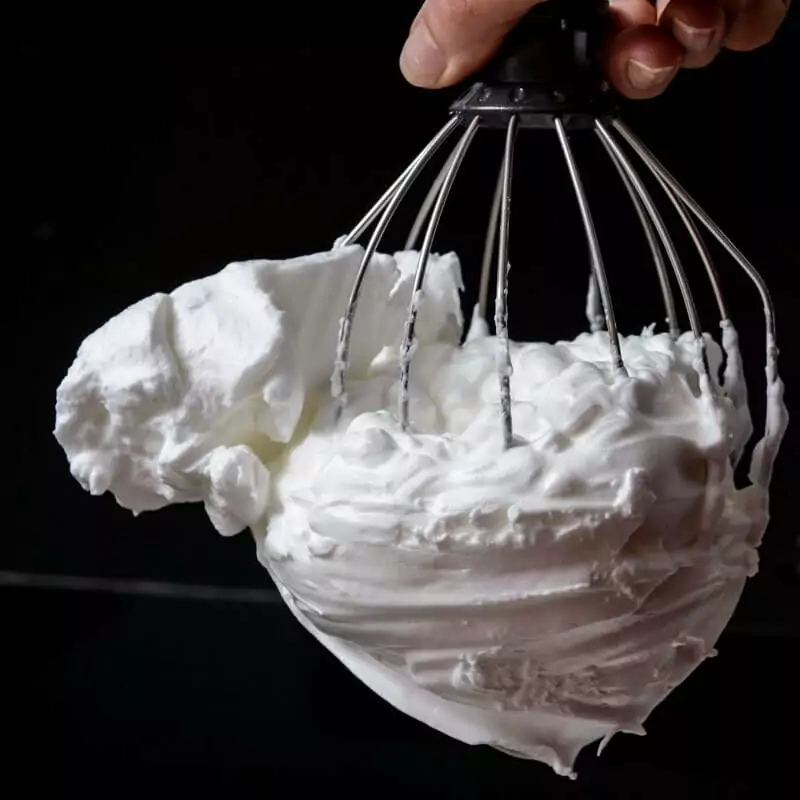
For many bakers, over beaten meringue anxiety is a real disorder. Things go right. And then they go wrong. Read on to make sure your meringue goes right.
I recommend BakeWise by Shirley Corriher for its meringue and other hows and whys, and more than 200 recipes.
SOFT, FIRM, AND VERY FIRM MERINGUE
Recipes call for different types of meringue: egg whites whipped into a stable and consistent foam of tiny bubbles.
FLEXIBLE MERINGUE: When you fold well-whipped egg whites into a thick batter, it loosens and lightens the batter without the meringue cracking or crumbling. And when the lightened batter inhabits the oven, the folded meringue rises like fans at rock concert.
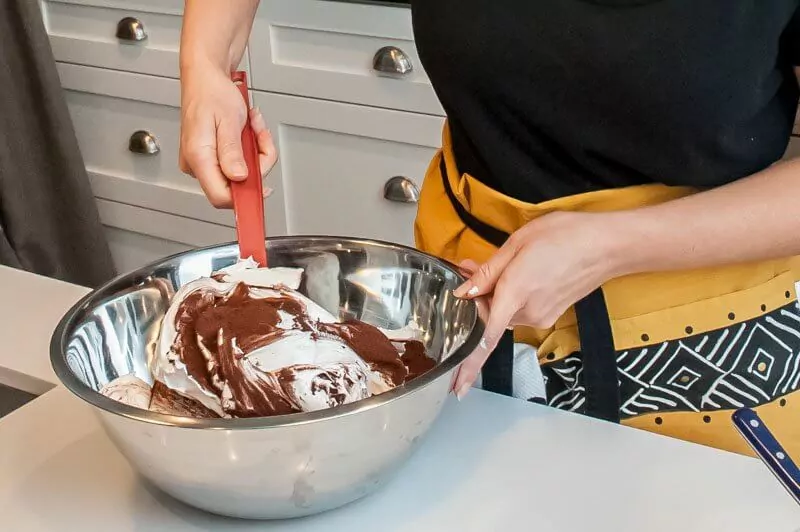
Soft peak meringue holds a peak when you lift the whisk out of the bowl. It’s a sturdy, flexible foam that resembles whipped cream — very easy to incorporate into a heavy batter. Soft as a morning cloud, this meringue traces a cumulus trail when you sweep your finger through it.
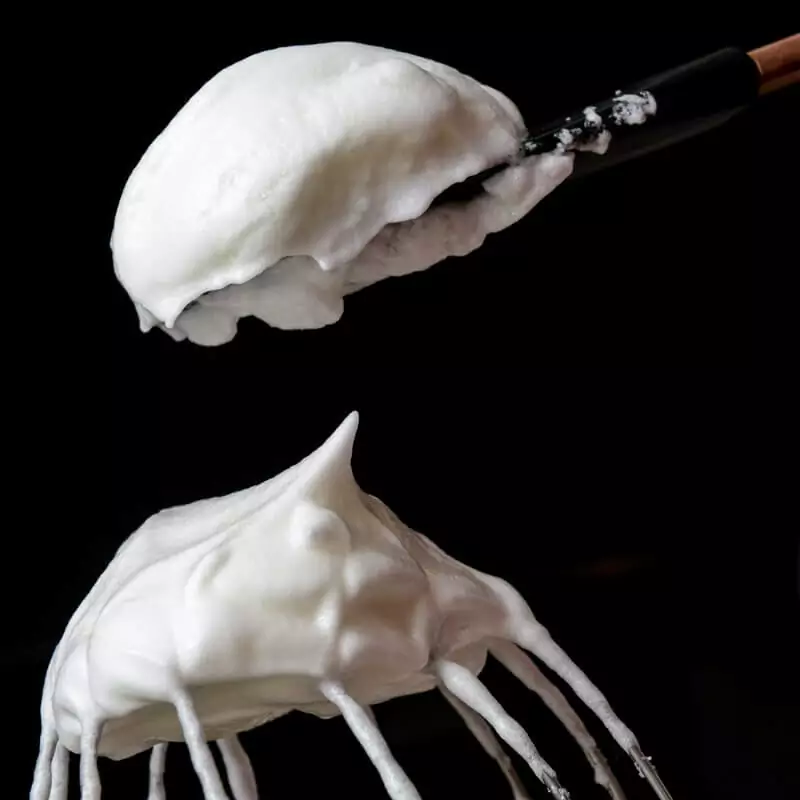
Most often, soft peak meringue wins supporting actor of the dish, lightening the texture and creating some fluff. I use soft peak meringues in my Homemade Marshmallows, Lemon Macarons, and Sour Cherry Amaretti.
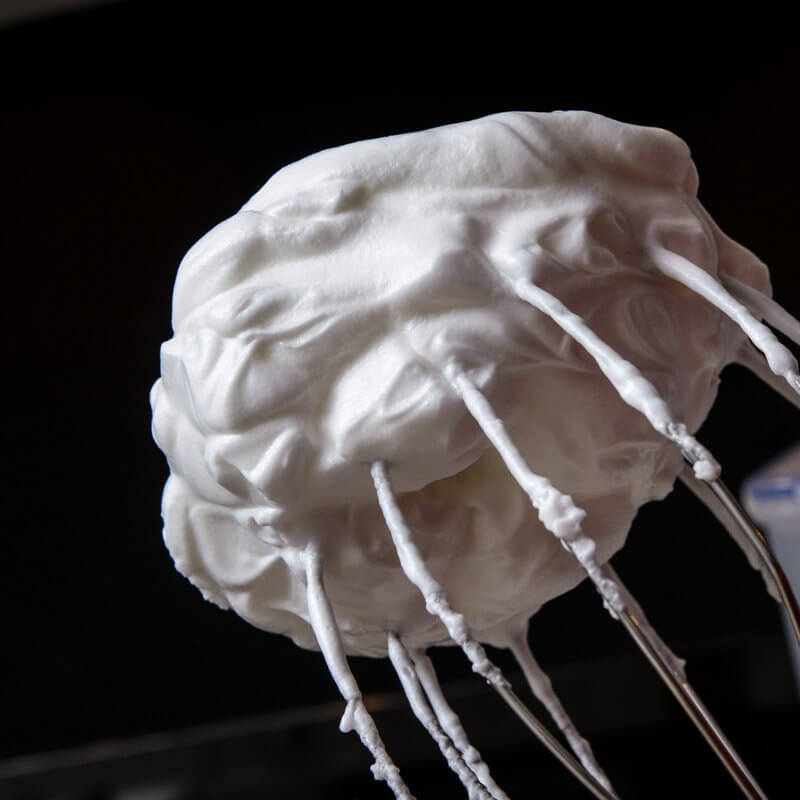
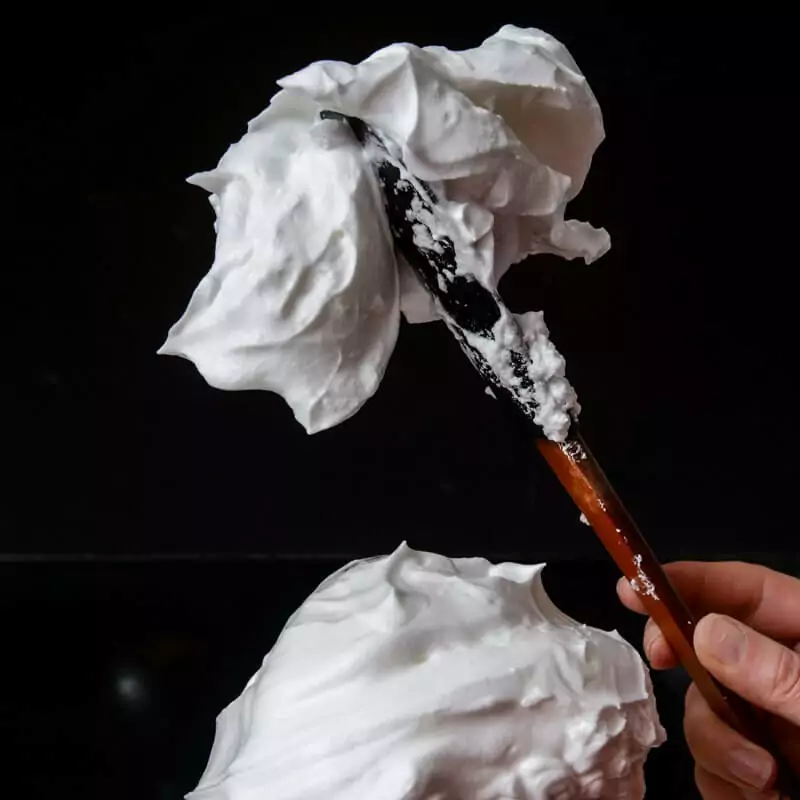
FIRM PEAK MERINGUE
Firm peak meringue holds a stiffer peak when you lift the whisk out of the bowl. Hold the whisk upright: the peak will stand firm. Drag your finger through the foam and you’ll sculpt a clear track.
Depending on the dish (a soufflé for instance), a firm peak meringue will often — but not always — reward you with a higher rise when baked.
I use a firm peak meringue in my Hazelnut Chocolate Meringue Cookies. The unique texture of these cookies depends on a well-made meringue.
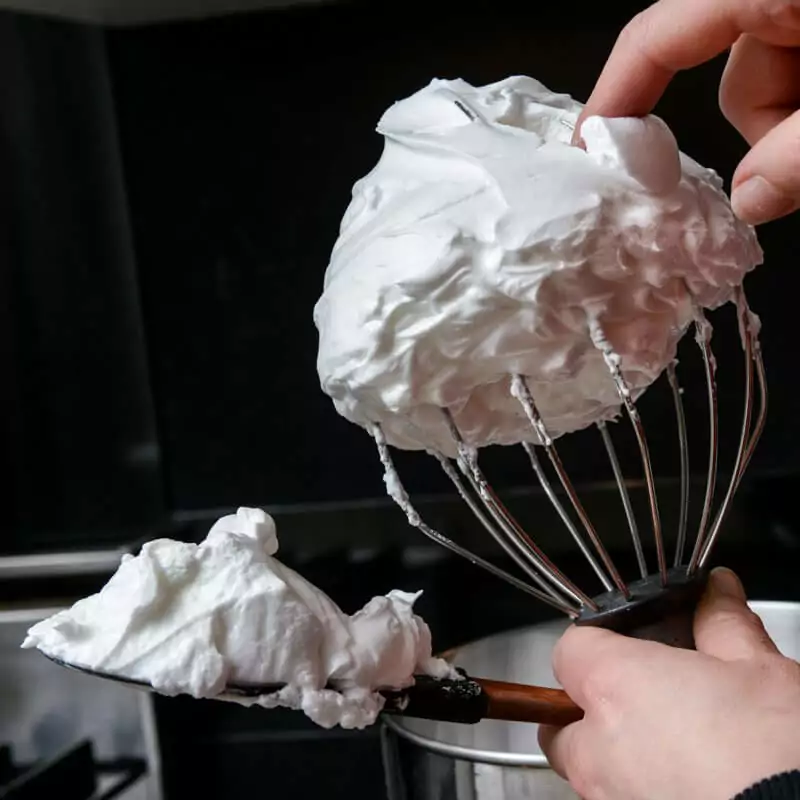
VERY FIRM PEAK MERINGUE
Very firm peak meringue stands upright and firm, like a salute to baking. The foam seems proud, stubborn, and unwilling to fold into anything (it will). French Meringue like this dries in the oven for hours. I use it for my Cocoa Swirl Meringue and Pistachio Rose Water Meringue.
AVOID OVER BEATEN MERINGUE
The foam bubbles in over-beaten egg whites become too big and cannot maintain their structure. When folded into a batter, the bubbles lose their bond and look lumpy. In the oven, they pop and deflate.
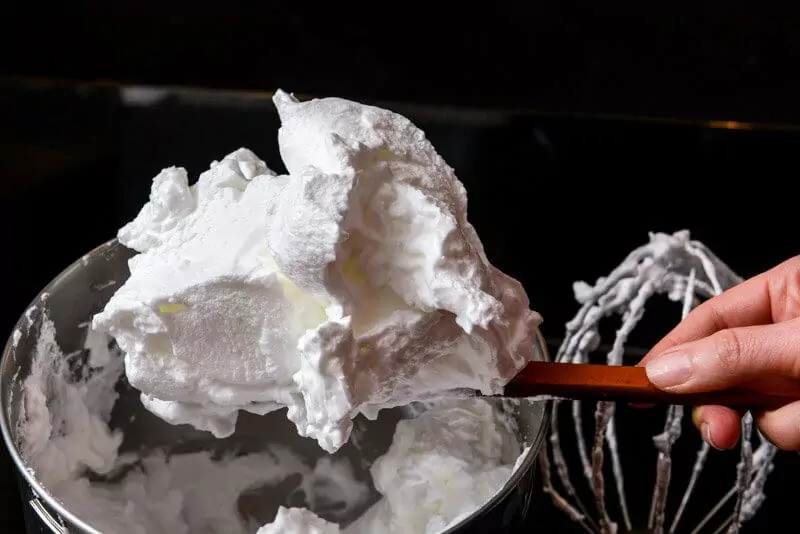
Over-beaten meringue invades without warning. The thing is, no matter how long you beat the egg whites, to the eye they appear smooth and firm. But try to fold them into a heavy batter. The protein bonds, overtightened, make your egg whites lose their volume and go lumpy, grainy, and dry. They then dissolve. If this happens to you, start over.
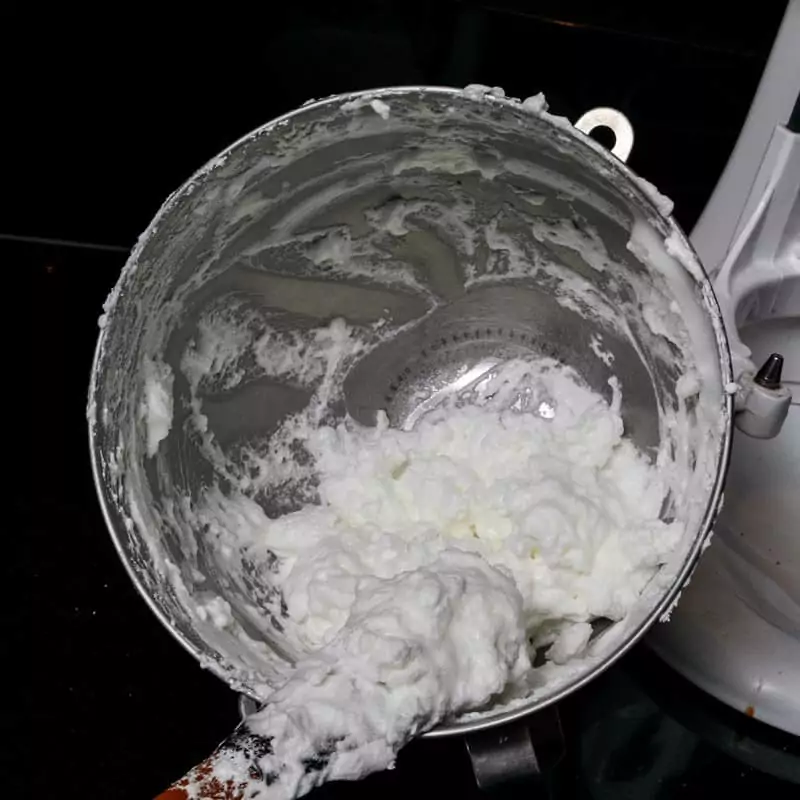
SUCCESSFUL MERINGUE TIPPING POINTS
First, your bowl MUST be grease-free and perfectly dry.
Very often, recipes call for cream of tartar and/or sugar when whipping egg whites. Together or separately, these ingredients stabilize the meringue. You’ll see a difference.
Warm egg whites whip into a loftier and more stable meringue than cold egg whites. You can warm the egg whites over steam or on very low power in the microwave—just a few seconds at a time. Some recipes call for egg whites warmed to 120ºF. But I’m happy with egg whites at around 100 ºF, which is slightly warmer than body temperature.
The fresher the egg whites, the more stable the meringue. Older egg whites, frozen or unfrozen, will often create loftier but less stable meringue.
Use a whip rather than a beater attachment when whipping egg whites. The whip will create the foamy texture you want.
Don’t begin whipping the egg whites at the highest speed of your mixer. This will create a very unstable foam that cracks and can lose its loft. To break up the mass, start at medium low (3 on a KitchenAid). If using cream of tartar, whip a little longer. Then raise the speed (6 on a KA) and watch your meringue take shape. Raise it again (8 on KA) until soft peaks form. If using sugar, add it here, gradually. When the sugar is all in, go to the highest setting and watch your creation become a beautiful firm or very firm meringue.
Never take your eyes off the meringue. Let the phone ring and the dog bark. If the kitchen is on fire and you MUST leave, turn the stand mixer to its lowest setting and let the meringue stir until you’re ready to return. But for the best results, give your meringue all the careful attention required of a devoted lover.
While whipping, engage ALL of the egg whites. That way, you won’t create meringue islands floating on pools of unwhipped egg whites.
- Labels
- Baking Tips,
- Quick and Easy
- Tags
- Baking Tips,
- Eggs,
- Meringue
